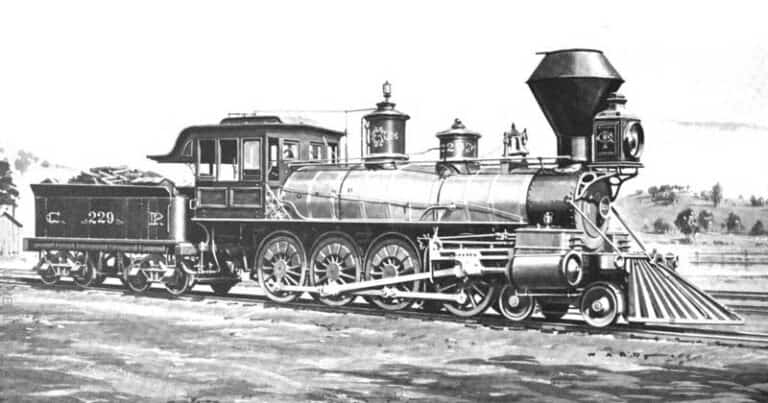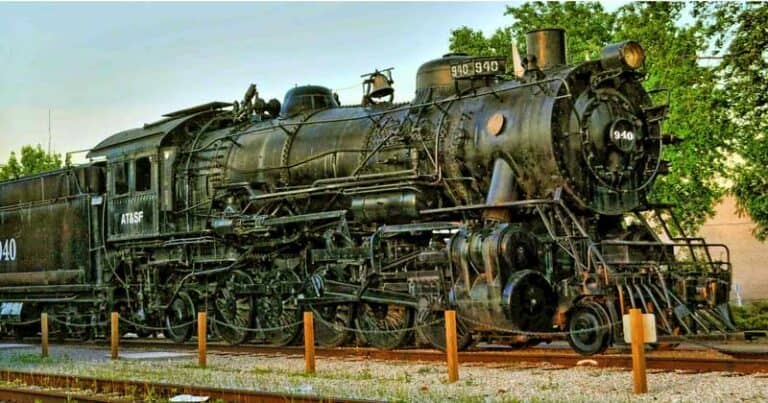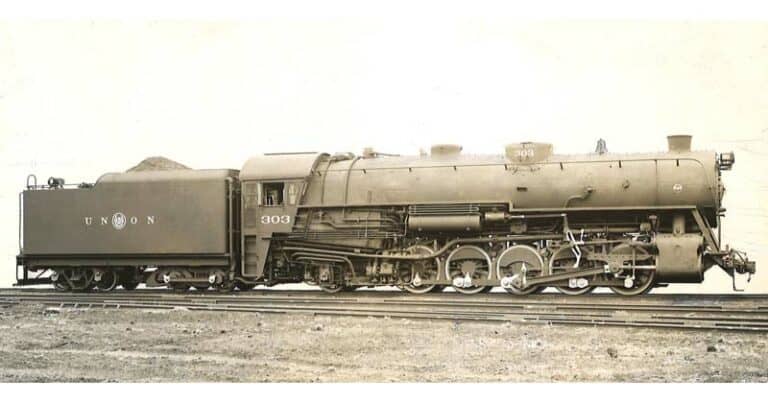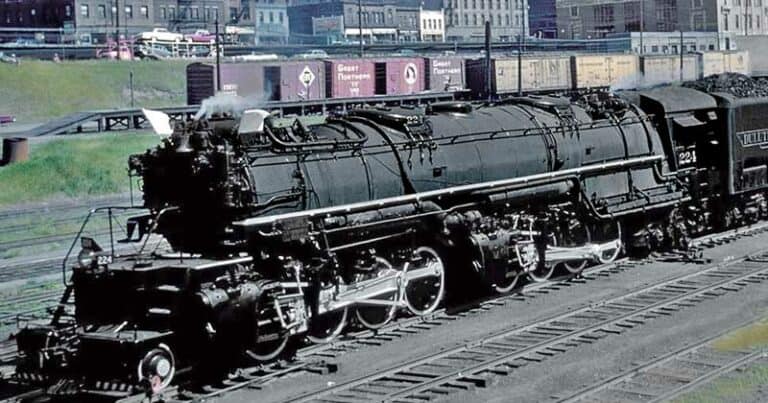2-10-10-2 Double Decapod
In the early 1900s, the Atchison, Topeka & Santa Fe Railway was satisfied with the performance of their 2-10-2 “Santa Fe” type locomotives. But as the railroad grew, the need for more power quickly became evident. What could be better than doubling the 2-10-2 design? How about a 2-10-10-2?
The 2-10-2 was a rigid wheel base design, while the 2-10-10-2 was a Mallet articulated design (learn more about the Whyte Notation and wheel arrangements and classifications). The rear set of drivers sat in a rigid frame while the front set could pivot to follow the track. With a wheelbase this long, that was a necessity to make it around standard railroad curves.
Santa Fe’s 2-10-10-2 doesn’t hit the right note

The Santa Fe did the work in their own shops, stripping down 20 Baldwin-built 2-10-2 locomotives to reassemble them into 10 doubled up locomotives numbered 3000 to 3009. These were huge machines- the largest and longest in the world at the time. Unfortunately, they were not the most successful.
The work was done over a two year period beginning in 1911, with the first locomotives entering service in late 1911. It became immediately apparent that these Santa Fe 2-10-10-2 locomotives suffered from the same problems as previous high-boiler, high-wheel count, low-engineered locomotives. Top speed was only 10 to 15 miles an hour before they lost steam.
Even in helper service, where the Santa Fe tried them out next, that top speed was not enough. So just three years after building the ten, the Santa Fe “unbuilt” them. Between 1915 and 1918, Santa Fe shops rebuilt the 2-10-10-2 locomotives back into their original 2-10-2 configuration.
Virginian’s 2-10-10-2 does it right
The same year Santa Fe finished returning their 2-10-10-2 locomotives back to the 2-10-2 wheel arrangement, the opposite side of the country saw ten new 2-10-10-2 locomotives built. The Virginian hauled coal out of the West Virginia mountains down to the Atlantic Ocean. It could use the muscle of a 2-10-10-2, sometimes called a “Double Decapod”.
The Virginian Railway did not have the problems with the wheel arrangement that the Santa Fe did, running these big machines for between 25 and 30 years. These were also Mallet articulated locomotives. Primarily these monsters were used as pushers on some of the Virginian’s most punishing grades, such as the 2.11% grade at Elmore, West Virginia.

It may take a second glance, but did you notice the relatively small tender with Virginian 802 above? Pushers do not typically go long distances and so do not need as push coal and water, but that was not the reason the locomotives were ordered with a short tender. The short tender was required so these long locomotives would fit on existing turntables.
Why was the Santa Fe 2-10-10-2 such a complete failure and the Virginian AE Class of the same wheel arrangement a success? It would likely take a mechanical engineer with the plans of each design for a definitive conclusion, but a layman’s guess is the difference lies in the builder.
Santa Fe built this complicated machine in their own shops. Yes, they had very talented employees; but they were not locomotive builders by trade. Meanwhile, ALCo, the American Locomotive Company, built the Virginian’s 2-10-10-2 locomotives. By this time, ALCo’s Schenectady Locomotive Works had built tens-of-thousands of steam locomotives.
Survivors?
In a word: None. Who wouldn’t want to see one of these beasts? But there were only 20 made, and 10 of those were “unmade”. The Virginian scrapped their successful AE Series between 1943 and 1949. Those were war years and years when steam was plentiful and the steam preservation movement had not yet taken hold.

Railfan and model railroader. Writer and consumer of railroad news and information.







